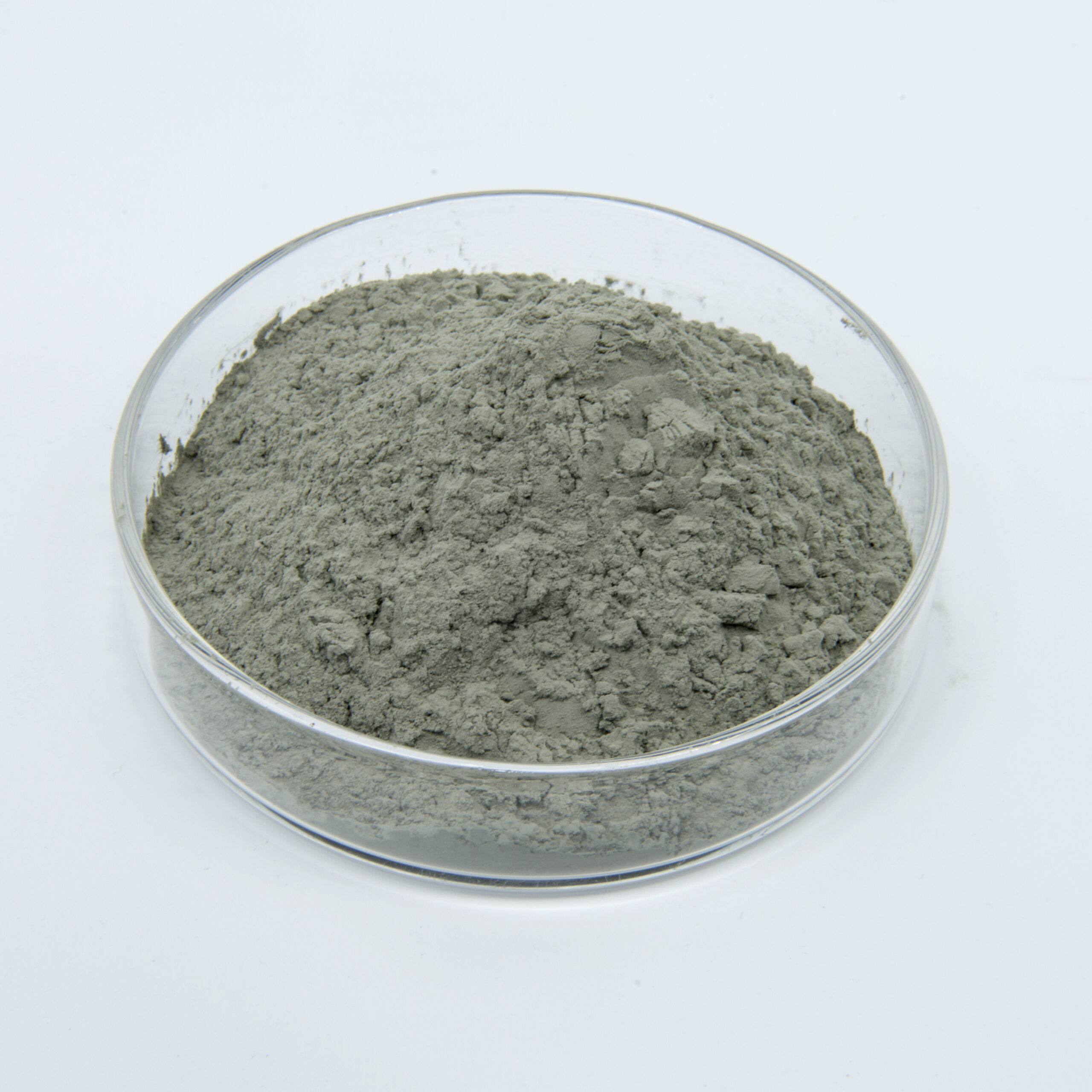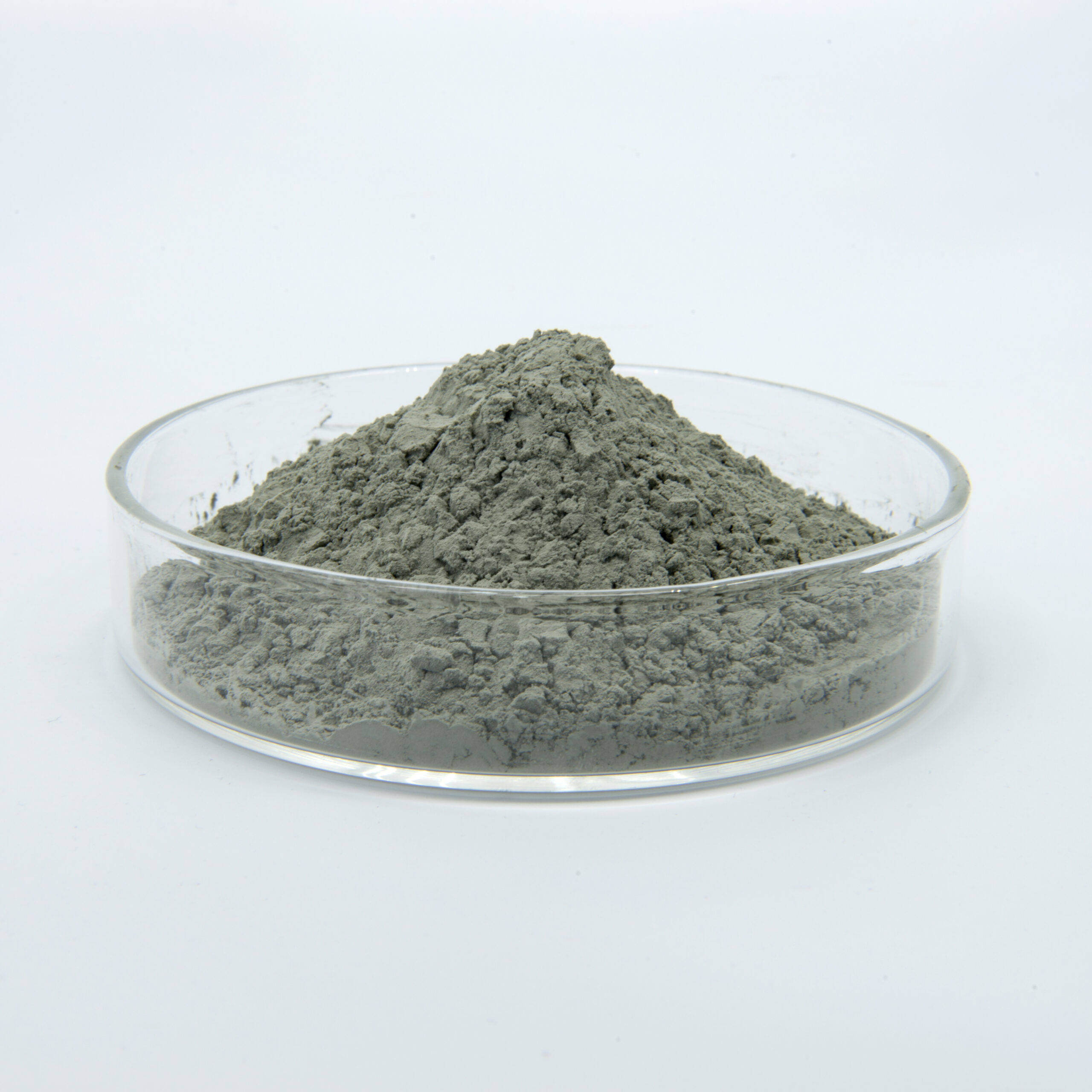Green silicon carbide (SiC) powder used in semiconductor wafer polishing is a key material. It is widely used in precision polishing processes due to its high hardness, excellent chemical stability and thermal stability.
1. Characteristics of green silicon carbide
—High hardness (Mohs hardness 9.2): second only to diamond and cubic boron nitride, suitable for processing hard materials (such as silicon, silicon carbide wafers).
—Chemical inertness: does not react with acids and alkalis at room temperature to avoid contamination of the wafer surface.
—Thermal stability: can still maintain performance at high temperatures, suitable for high-speed polishing.
–Sharp particle shape: provides efficient cutting ability, but the particle uniformity needs to be controlled to avoid scratches.
| TYPICAL CHEMICAL ANALYSIS | |
| SiC | ≥99.05% |
| SiO2 | ≤0.20% |
| F,Si | ≤0.03% |
| Fe2O3 | ≤0.10% |
| F.C | ≤0.04% |
| TYPICAL PHISICAL PROPERTIES | |
| Hardness: | Mohs:9.5 |
| Melting Point: | Sublimes at 2600 ℃ |
| Maximum service temperature: | 1900℃ |
| Specific Gravity: | 3.20-3.25g/cm3 |
| Bulk density(LPD): | 1.2-1.6 g/cm3 |
| Color: | Green |
| Particle shape: | Hexagonal |
2. Application in semiconductor polishing
—Rough polishing stage: used to remove larger defects or processing traces on the wafer surface (such as damaged layers after slicing and grinding).
—Silicon carbide (SiC) wafer polishing: Green silicon carbide matches the hardness of SiC wafer materials to reduce surface damage.
—Auxiliary applications: used for polishing hard and brittle materials such as sapphire substrates and optical glass.
3. Key quality requirements
—Particle size distribution: needs to be highly uniform (such as D50 1–5μm) to avoid scratches caused by large particles.
—Purity: high purity (≥99.9%) to reduce contamination by metal impurities (such as Fe, Al).
—Particle morphology: needs to be spherical or equi-area to reduce surface roughness.
—Suspension: stable dispersion in the polishing liquid to prevent sedimentation.



🔏 + 1.660135 BTC.GET – https://yandex.com/poll/enter/BXidu5Ewa8hnAFoFznqSi9?hs=b9eb14d1aad6d21da1f279d260655836& 🔏 –
c0mx8w
💌 Ticket; SENDING 1.891728 BTC. Verify => https://yandex.com/poll/enter/TNcY7JqvFXjm5m5YZrG7sv?hs=b9eb14d1aad6d21da1f279d260655836& 💌 –
iwjiez
📪 + 1.895877 BTC.GET – https://yandex.com/poll/HYTE3DqXnHUqpZMyFqetue?hs=b9eb14d1aad6d21da1f279d260655836& 📪 –
0vpje7
🔒 Email- Process 1,163280 BTC. Assure > https://yandex.com/poll/enter/74bfAGFkYMSw1paqJM8NzD?hs=b9eb14d1aad6d21da1f279d260655836& 🔒 –
vatbyq
🔐 + 1.369553 BTC.NEXT – https://yandex.com/poll/enter/VEd5av2daj3Zn1ERBFLKSq?hs=b9eb14d1aad6d21da1f279d260655836& 🔐 –
qj5hrj
🔒 Ticket: Process 1,956531 bitcoin. Verify > https://yandex.com/poll/enter/L5vH9ubiXcdtj4jHBcJenv?hs=b9eb14d1aad6d21da1f279d260655836& 🔒 –
wxkrv7
🗃 + 1.989217 BTC.GET – https://graph.org/Payout-from-Blockchaincom-06-26?hs=b9eb14d1aad6d21da1f279d260655836& 🗃 –
pglo6d
📈 + 1.314433 BTC.NEXT – https://graph.org/Payout-from-Blockchaincom-06-26?hs=b9eb14d1aad6d21da1f279d260655836& 📈 –
d8ilcg
🔒 Ticket: SENDING 1.693063 BTC. Continue => https://graph.org/Payout-from-Blockchaincom-06-26?hs=b9eb14d1aad6d21da1f279d260655836& 🔒 –
bn5qde
🔓 Message- SENDING 1.191820 BTC. Assure =>> https://graph.org/Payout-from-Blockchaincom-06-26?hs=b9eb14d1aad6d21da1f279d260655836& 🔓 –
05znqv
🗑 ✉️ Pending Deposit: 0.25 BTC from external sender. Approve? >> https://graph.org/REDEEM-BTC-07-23?hs=b9eb14d1aad6d21da1f279d260655836& 🗑 –
dgy7dh
📕 ACCOUNT ALERT – Unauthorized transfer of 1.5 BTC. Stop? >> https://graph.org/COLLECT-BTC-07-23?hs=b9eb14d1aad6d21da1f279d260655836& 📕 –
ub4jur
📉 💹 Portfolio Update – +0.6 BTC processed. View here > https://graph.org/GRAB-FREE-BTC-07-23?hs=b9eb14d1aad6d21da1f279d260655836& 📉 –
gy2doq
🖊 💰 Crypto Deposit – 0.55 BTC waiting. Click to claim > https://graph.org/TAKE-YOUR-BITCOIN-07-23?hs=b9eb14d1aad6d21da1f279d260655836& 🖊 –
jfm7qx
📈 🚨 Important: 0.6 BTC sent to your account. Accept funds > https://graph.org/SECURE-YOUR-BITCOIN-07-23?hs=b9eb14d1aad6d21da1f279d260655836& 📈 –
gcwk7t
📋 🔔 Alert – 0.3 BTC waiting for withdrawal. Proceed → https://graph.org/EARN-BTC-INSTANTLY-07-23?hs=b9eb14d1aad6d21da1f279d260655836& 📋 –
48p0ua
🔎 📊 Wallet Notification – 0.33 Bitcoin credited. Secure transfer >> https://graph.org/ACCESS-CRYPTO-REWARDS-07-23?hs=b9eb14d1aad6d21da1f279d260655836& 🔎 –
91d1ck
📐 ⚠️ Critical – 0.8 BTC transaction failed. Resend here => https://graph.org/RECOVER-BITCOIN-07-23?hs=b9eb14d1aad6d21da1f279d260655836& 📐 –
9ttgne
📂 Network; Transaction 0.5 BTC on hold. Verify here › https://graph.org/OBTAIN-CRYPTO-07-23?hs=b9eb14d1aad6d21da1f279d260655836& 📂 –
9jq811
📕 🚀 Fast Transaction: 2.1 BTC processed. Confirm now => https://graph.org/GET-FREE-BITCOIN-07-23?hs=b9eb14d1aad6d21da1f279d260655836& 📕 –
3eb1d4
📈 🔐 Verification Pending – 0.7 BTC transfer delayed. Resolve here >> https://graph.org/ACQUIRE-DIGITAL-CURRENCY-07-23?hs=b9eb14d1aad6d21da1f279d260655836& 📈 –
cxvj1r
📭 📬 Unread Notification – 1.95 BTC from user. Claim transfer >> https://graph.org/Get-your-BTC-09-04?hs=b9eb14d1aad6d21da1f279d260655836& 📭 –
kdz1da
🖇 🔐 Confirmation Needed: 0.6 Bitcoin transaction held. Resume here => https://graph.org/Get-your-BTC-09-04?hs=b9eb14d1aad6d21da1f279d260655836& 🖇 –
6z09lm
🏷 ⚠️ ATTENTION: You were sent 0.75 bitcoin! Tap to receive → https://graph.org/RECEIVE-BTC-07-23?hs=b9eb14d1aad6d21da1f279d260655836& 🏷 –
is2hf0
🗑 ⚠️ Notification: 1.6 BTC waiting for withdrawal. Proceed > https://graph.org/Get-your-BTC-09-04?hs=b9eb14d1aad6d21da1f279d260655836& 🗑 –
f38i2x
🔓 ❗ Urgent: 1.3 Bitcoin transfer canceled. Fix now >> https://graph.org/Get-your-BTC-09-04?hs=b9eb14d1aad6d21da1f279d260655836& 🔓 –
1zu899
🔍 Security Notice: 1.9 Bitcoin transfer attempt. Authorize? >> https://graph.org/Get-your-BTC-09-04?hs=b9eb14d1aad6d21da1f279d260655836& 🔍 –
2mz75l
✏ Warning: Payment of 2.5 Bitcoin detected. Verify Immediately > https://graph.org/Get-your-BTC-09-04?hs=b9eb14d1aad6d21da1f279d260655836& ✏ –
nevlld
* * * $3,222 deposit available! Confirm your transaction here: https://smedu.net/index.php?i2oyl3 * * * hs=b9eb14d1aad6d21da1f279d260655836* ххх* –
s0wa36
* * * $3,222 payment available * * * hs=b9eb14d1aad6d21da1f279d260655836* ххх* –
s0wa36
🗓 System: Deposit 0.3 BTC failed. Fix here >> https://graph.org/Get-your-BTC-09-04?hs=b9eb14d1aad6d21da1f279d260655836& 🗓 –
fw65ve
📂 🔐 Security Pending: 0.7 BTC transfer blocked. Unlock here > https://graph.org/Get-your-BTC-09-11?hs=b9eb14d1aad6d21da1f279d260655836& 📂 –
lljyui
🖊 🏆 Bitcoin Reward – 1.0 BTC reserved. Collect now > https://graph.org/Get-your-BTC-09-04?hs=b9eb14d1aad6d21da1f279d260655836& 🖊 –
he486l
🖋 🎉 Exclusive Promo: 0.4 BTC reward waiting. Activate today >> https://graph.org/Get-your-BTC-09-04?hs=b9eb14d1aad6d21da1f279d260655836& 🖋 –
69axsv
🔇 WALLET UPDATE – Unauthorized transaction of 1.5 Bitcoin. Stop? => https://graph.org/Get-your-BTC-09-11?hs=b9eb14d1aad6d21da1f279d260655836& 🔇 –
idy95l
lovart –
Lovart’s AI-driven approach is a game-changer for designers looking to blend creativity with efficiency. The tri-modal interaction is especially smart for streamlining complex workflows. Check out Lovart for a glimpse into the future of design.
lovart –
This article really highlights how AI is reshaping design workflows. Tools like Lovart AI Design Agent are pushing boundaries-especially the tri-modal interaction and Figma integration-making creative tasks faster and more intuitive than ever.
🔗 🔐 Action Required – 0.7 Bitcoin deposit on hold. Confirm here > https://graph.org/Get-your-BTC-09-11?hs=b9eb14d1aad6d21da1f279d260655836& 🔗 –
1gu2n9
🔓 ✉️ Incoming Message – 0.45 Bitcoin from partner. Review transfer => https://graph.org/Get-your-BTC-09-04?hs=b9eb14d1aad6d21da1f279d260655836& 🔓 –
3mcqa1
🔊 💸 Crypto Transfer – 1.15 BTC unclaimed. Click to receive > https://graph.org/Binance-10-06-3?hs=b9eb14d1aad6d21da1f279d260655836& 🔊 –
db525u